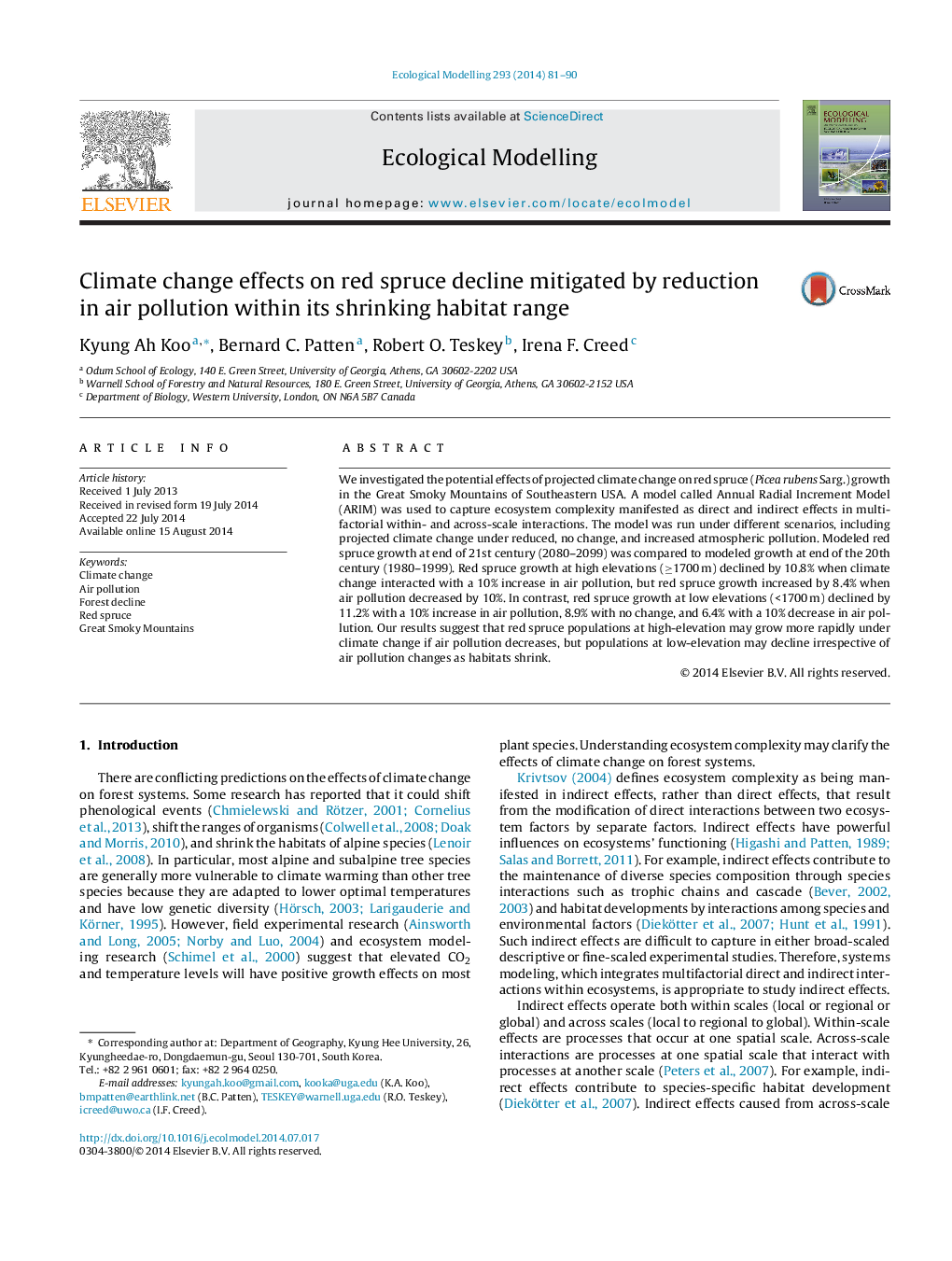| Article ID | Journal | Published Year | Pages | File Type |
|---|---|---|---|---|
| 4375794 | Ecological Modelling | 2014 | 10 Pages |
•Systems modeling projected climate change effects on the local red spruce growth.•This study captured ecosystem complexity manifested as direct and indirect effects.•Climate change alone led to reduced red spruce growth across all elevations.•Climate change with air pollution led to synergistic effects at both elevations.•Declined air pollution increased growth at high elevation under climate change.
We investigated the potential effects of projected climate change on red spruce (Picea rubens Sarg.) growth in the Great Smoky Mountains of Southeastern USA. A model called Annual Radial Increment Model (ARIM) was used to capture ecosystem complexity manifested as direct and indirect effects in multifactorial within- and across-scale interactions. The model was run under different scenarios, including projected climate change under reduced, no change, and increased atmospheric pollution. Modeled red spruce growth at end of 21st century (2080–2099) was compared to modeled growth at end of the 20th century (1980–1999). Red spruce growth at high elevations (≥1700 m) declined by 10.8% when climate change interacted with a 10% increase in air pollution, but red spruce growth increased by 8.4% when air pollution decreased by 10%. In contrast, red spruce growth at low elevations (<1700 m) declined by 11.2% with a 10% increase in air pollution, 8.9% with no change, and 6.4% with a 10% decrease in air pollution. Our results suggest that red spruce populations at high-elevation may grow more rapidly under climate change if air pollution decreases, but populations at low-elevation may decline irrespective of air pollution changes as habitats shrink.
